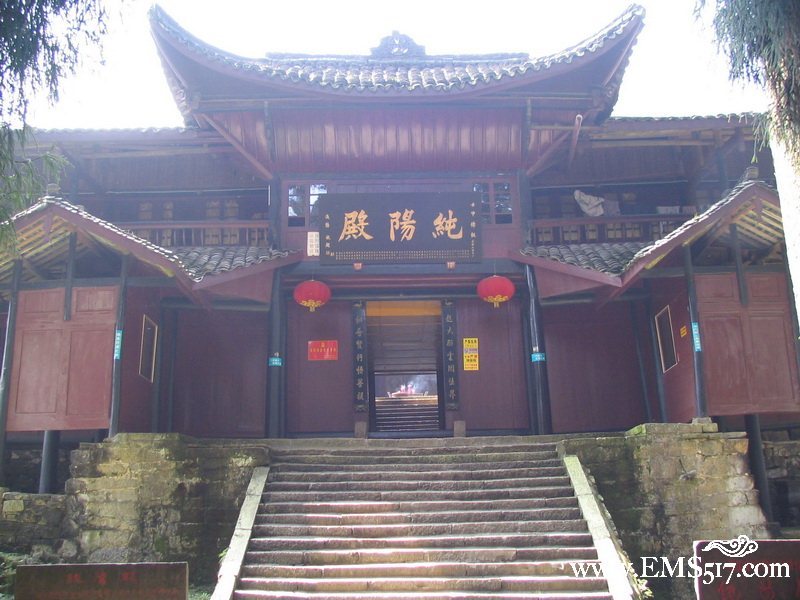Chunyang Temple
Built under Chicheng Peak in Wanli Period of Ming Dynasty (1573-1620), it was formerly named Lvxian Cave. The existing temple was reconstructed during the reign of Qianlong (1735-1795) and Jiaqing Emperors (1796-1820) in Qing Dynasty. The temple is not large in terms of area, but the architectural layout and design have a special taste. According to the formation, the gate, Main Hall and Sutra Depositary were built on three stone foundations of different heights. Stilted buildings were constructed on the flanks of the main structure. The ground of the building and the eaves of the gate make an archway-like structure, which adds to the prominence of the steps in front of the gate and highlights the entrance of the Hall. Steep stone steps are built between the Main Hall and the Sutra Depositary, since the two structures’ grounds are different in height. There are walkways of reasonable sizes on and around the steps, which lead up and down, left and right. The interior and exterior spatial variations make the structure functional and endow the temple, which is in wooded mountain, with special and charming scenery. There are two sub-halls. The first is Pharmacist Hall, which enshrines Bhaisajyaguru, the Buddha of Medicine. On its sides are Suryaprabha and Candraprabha, Bodhisattvas of sunlight and moonlight. They are bronze statues coated with gold and cultural relics passed down from Qing Dynasty. The other sub-hall is Mahavira Hallwhich enshrines Buddha Shakyamuni. The 18 arhats are on its sides. There are two shrines each on the left and right dedicated for samantabhadra, ksitigarbha, avalokitesvara, and manjuist. There is also a skanda. In the bush behind the Hall, two stone tablets with clear text still existing. It indicates the history that both Buddhism and Taoism had existed in Mt. Emei before Buddhism prospered and Taoism vanished.

